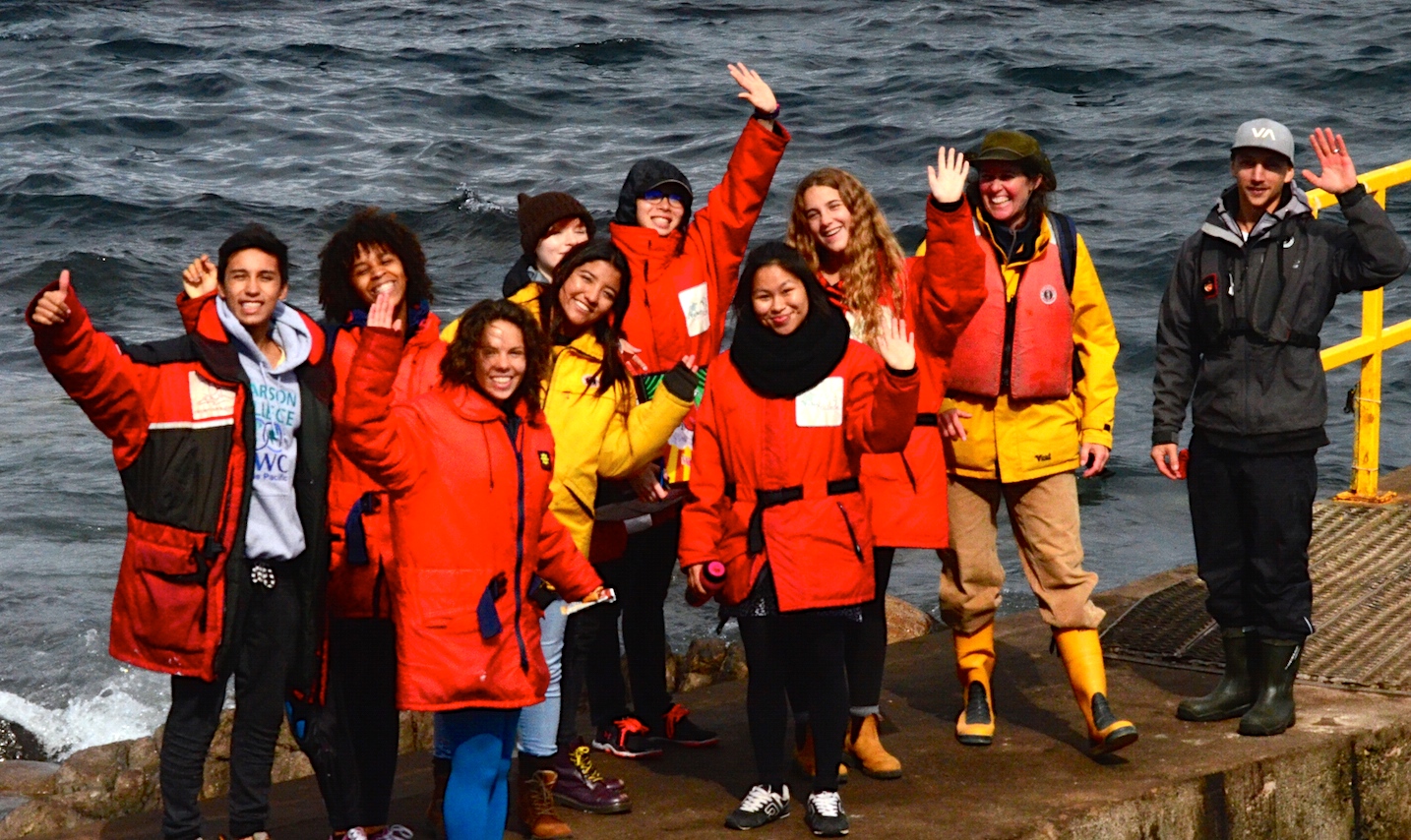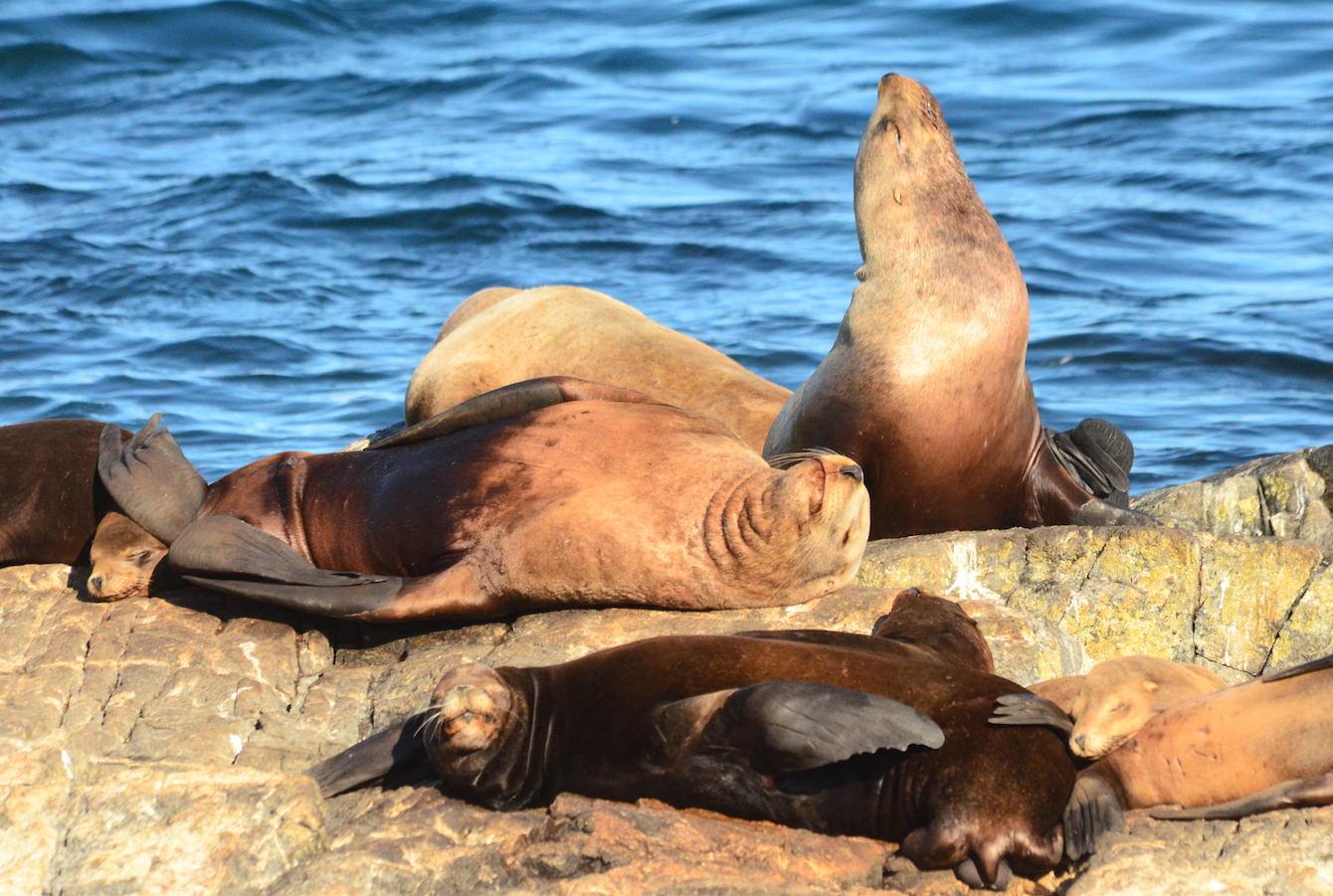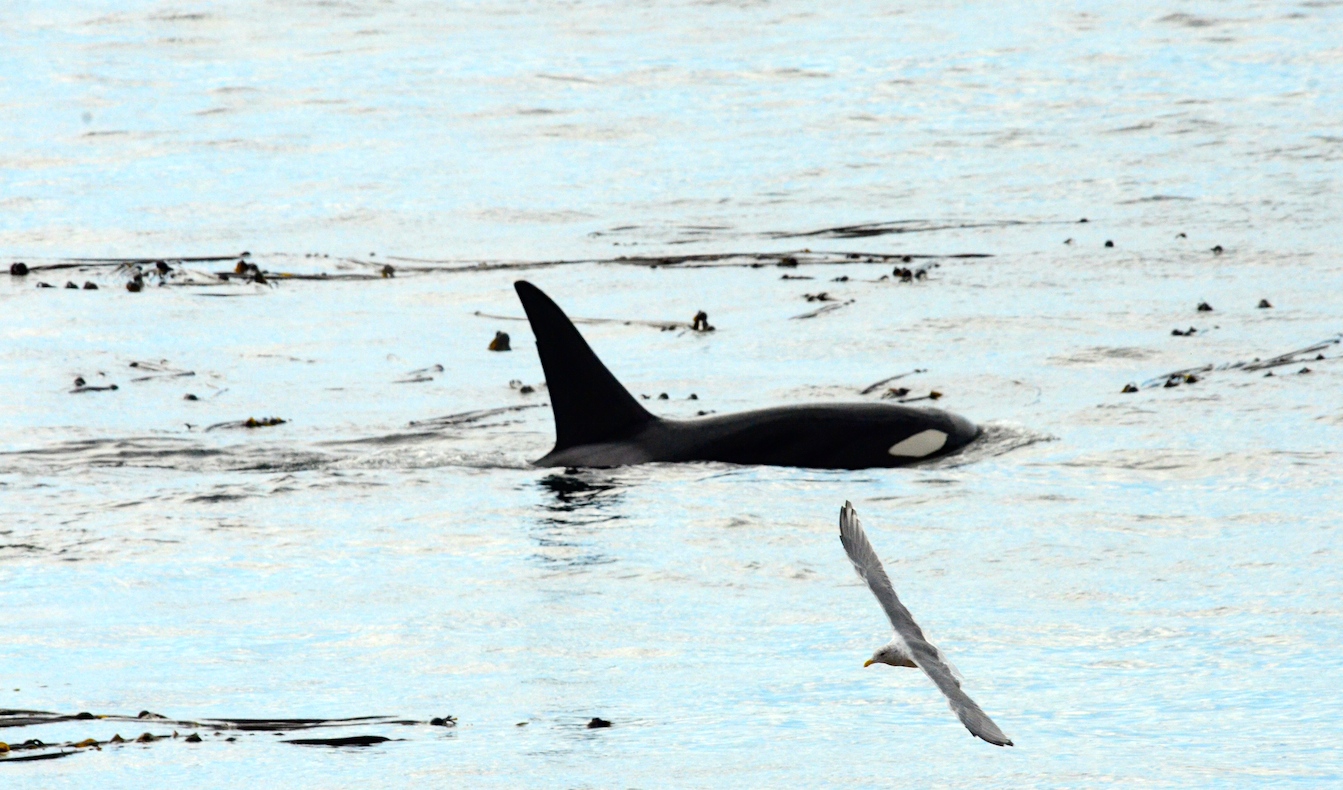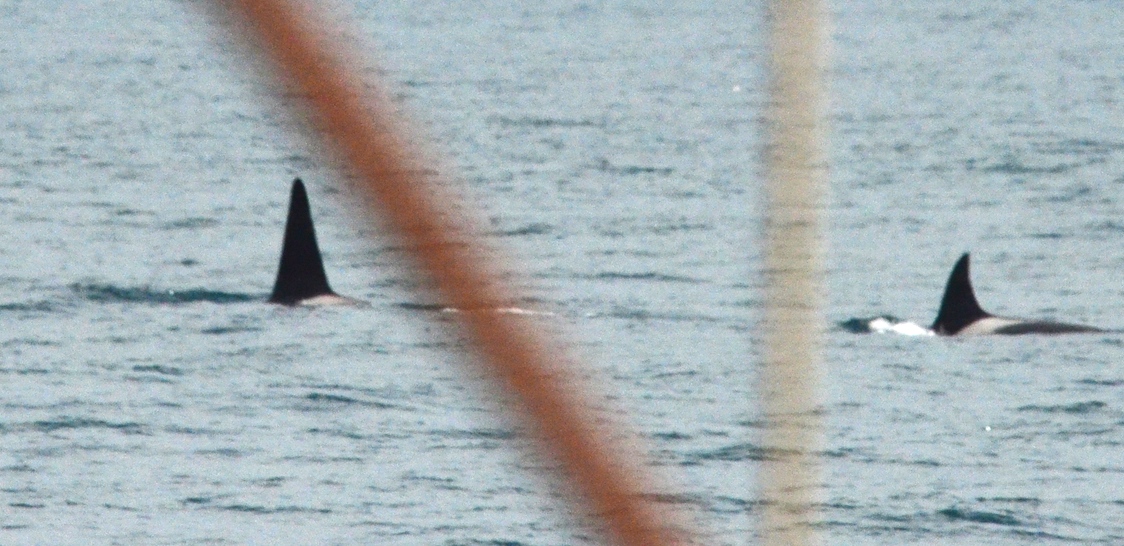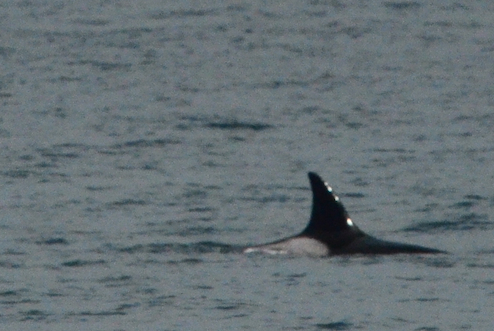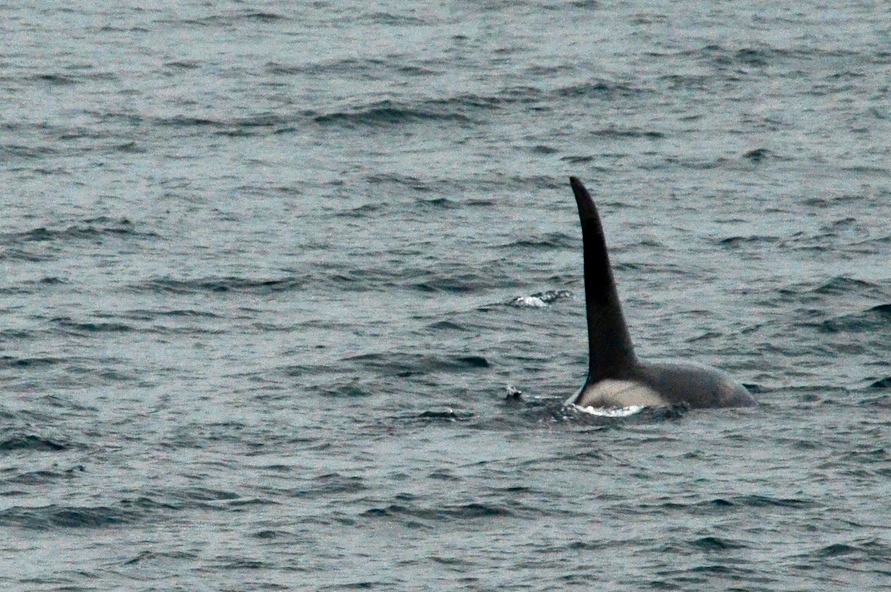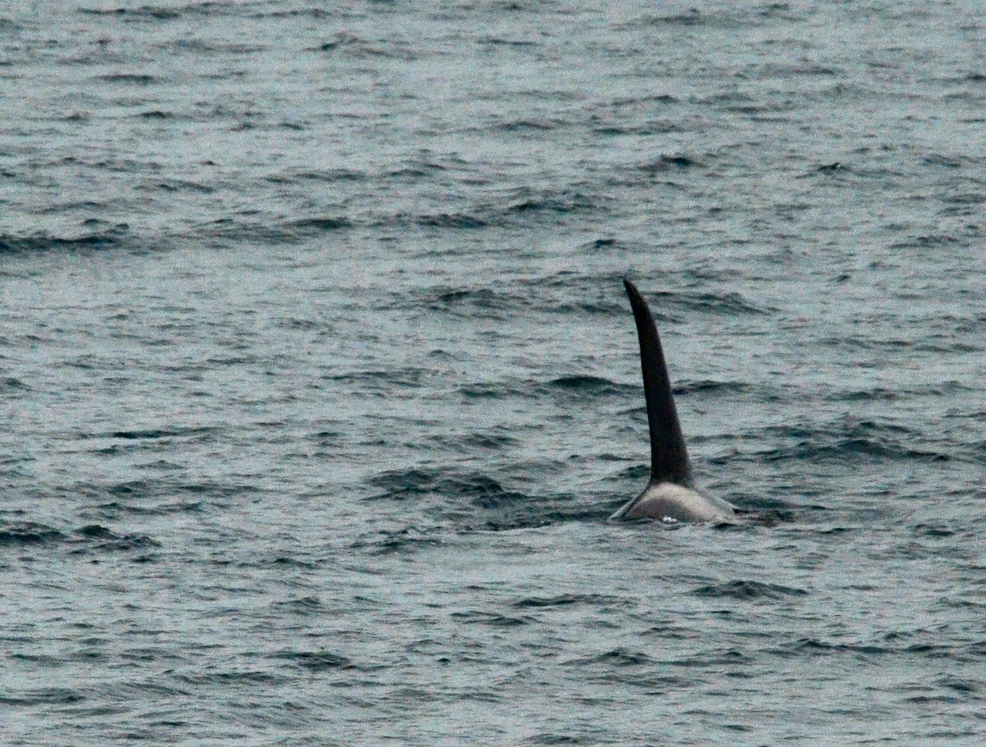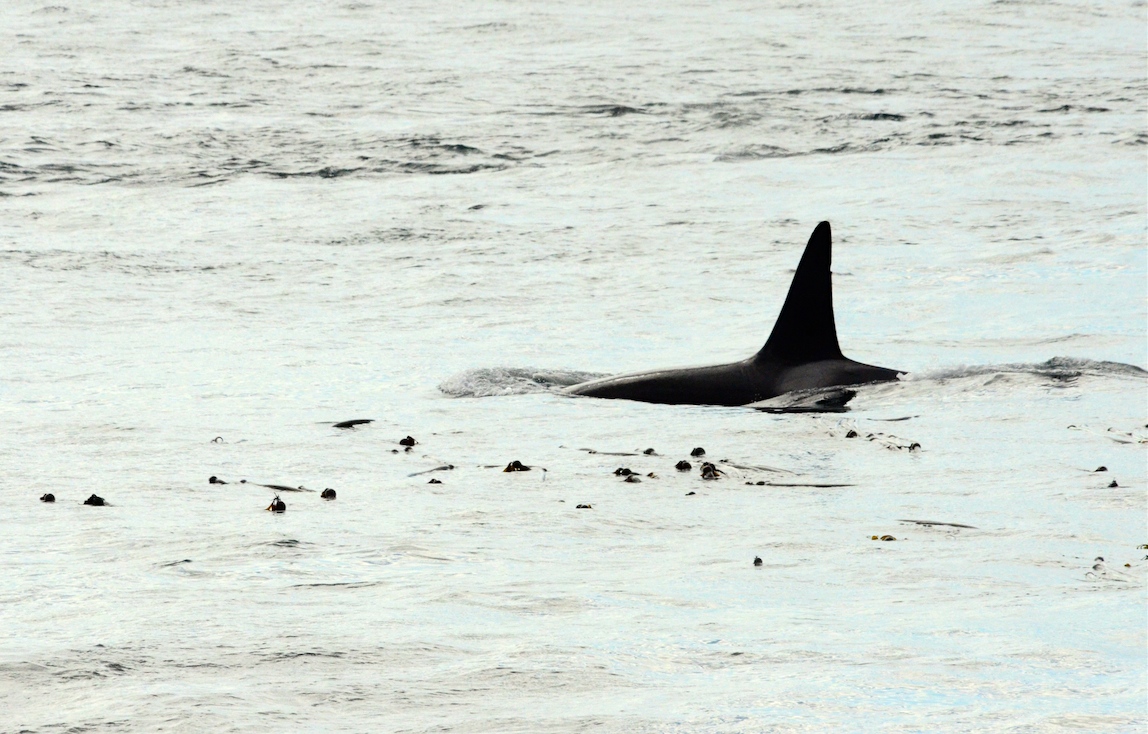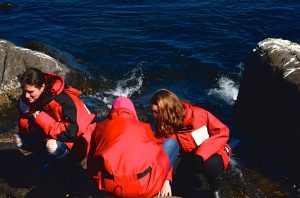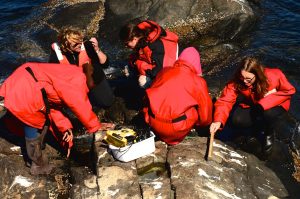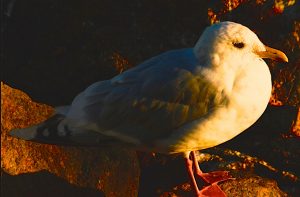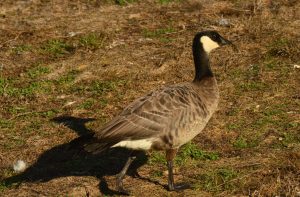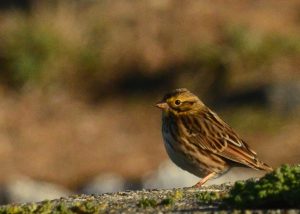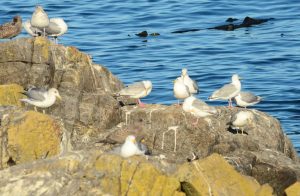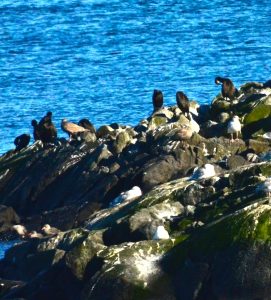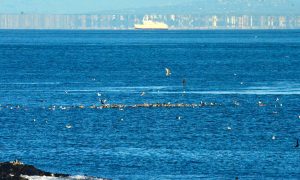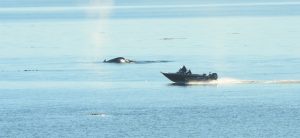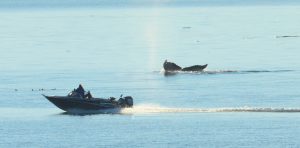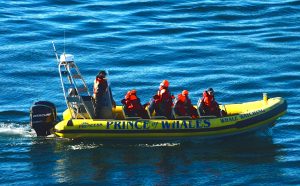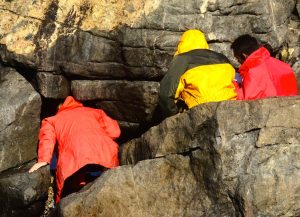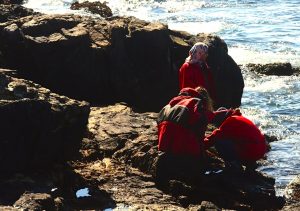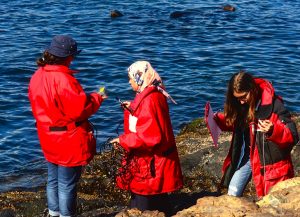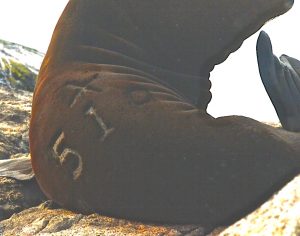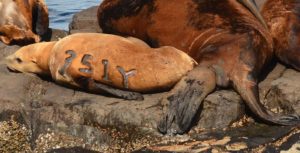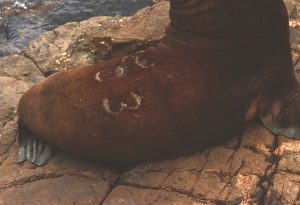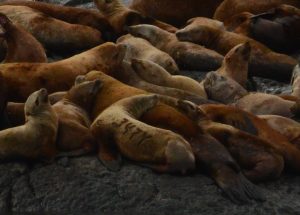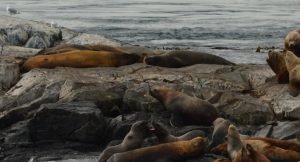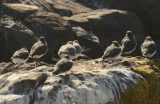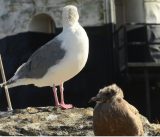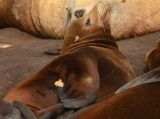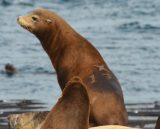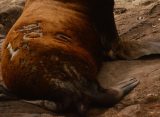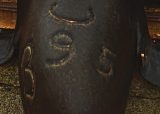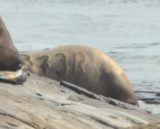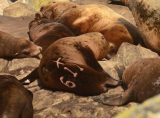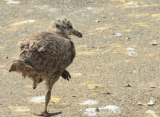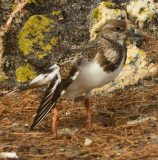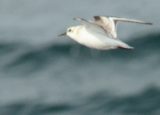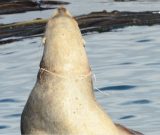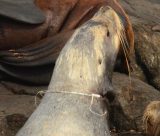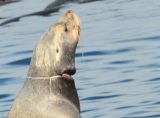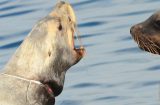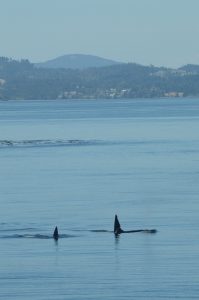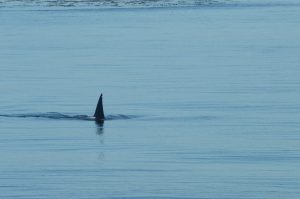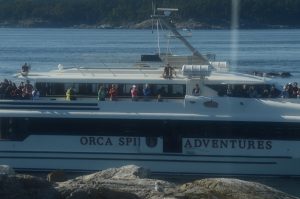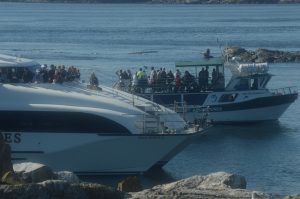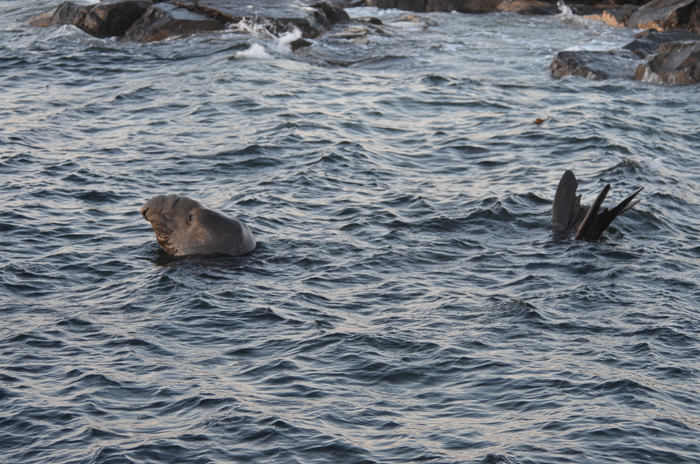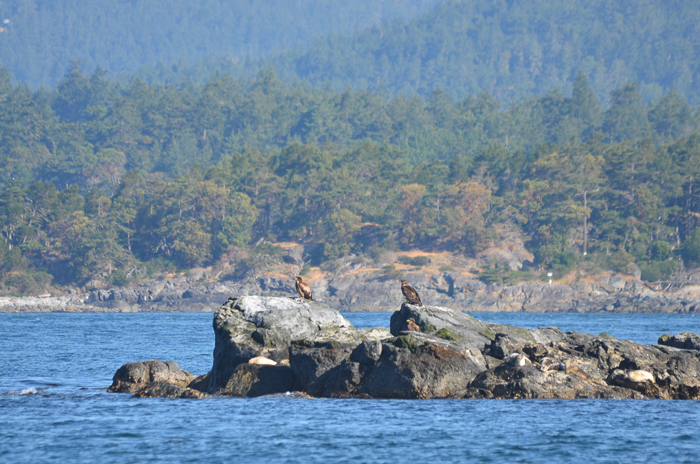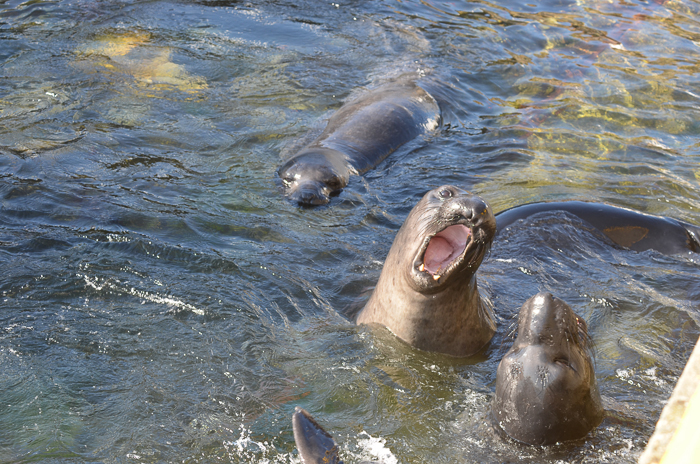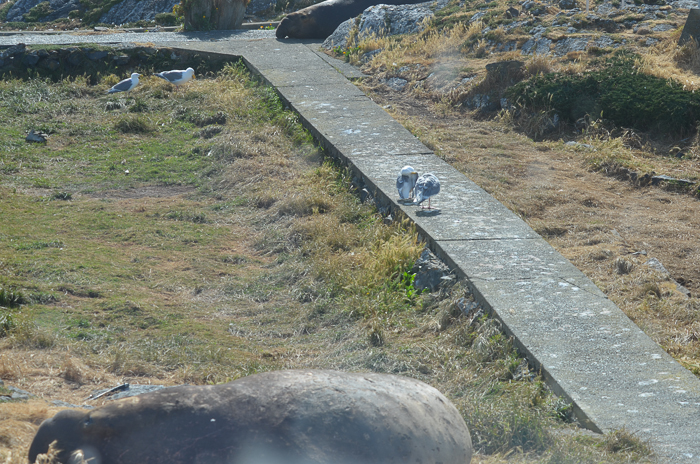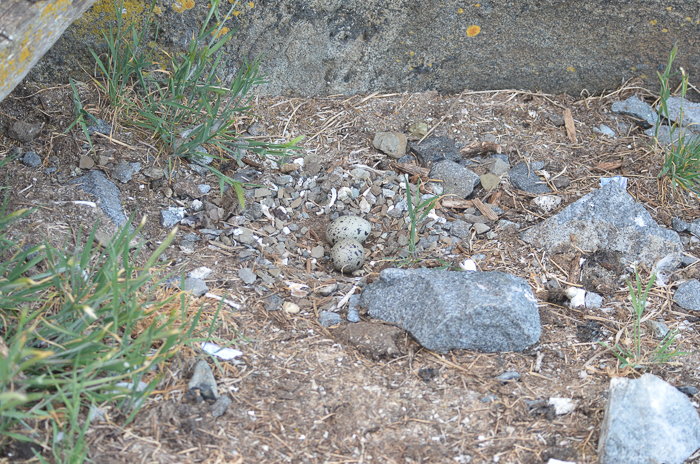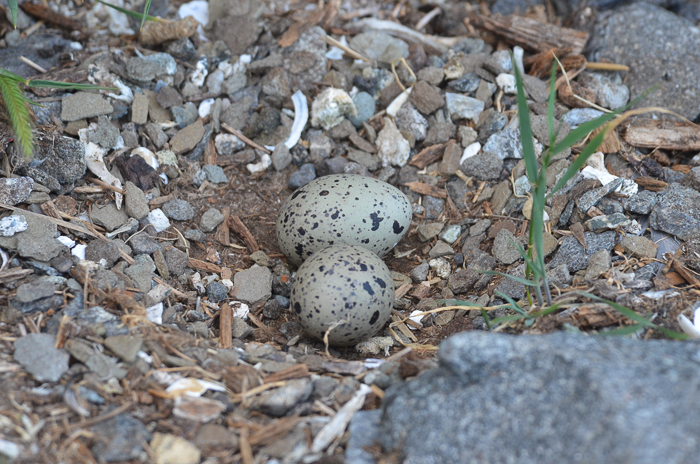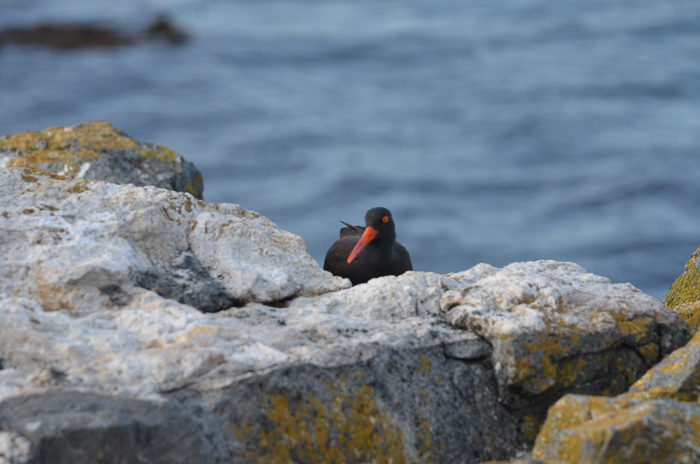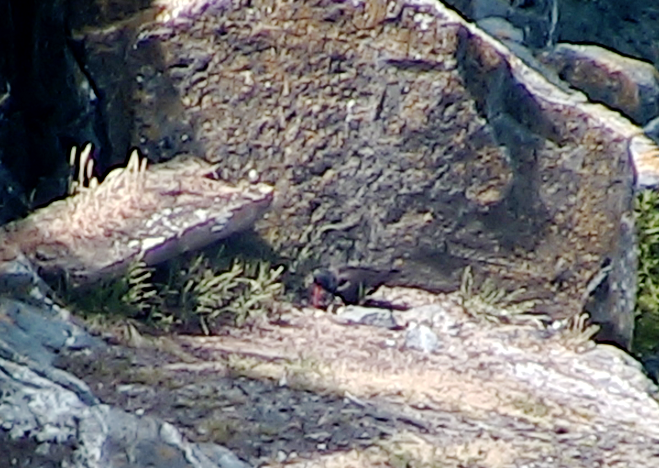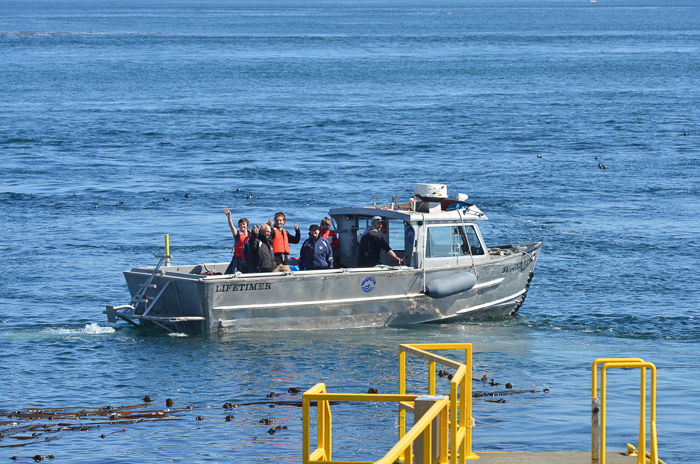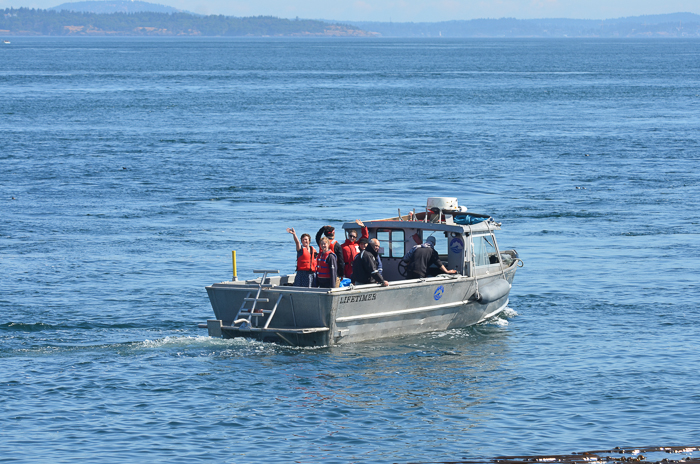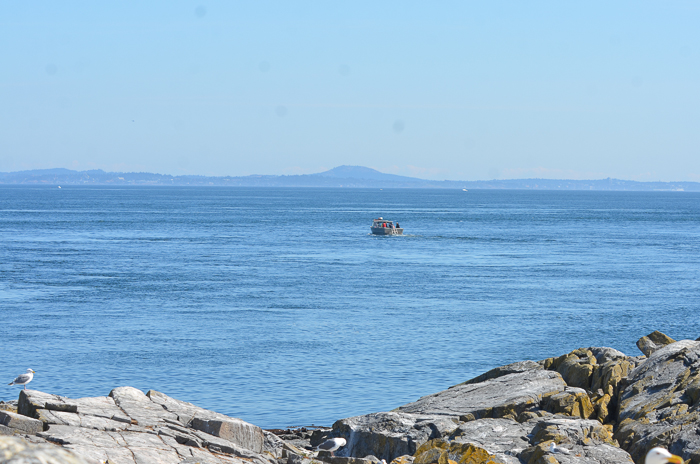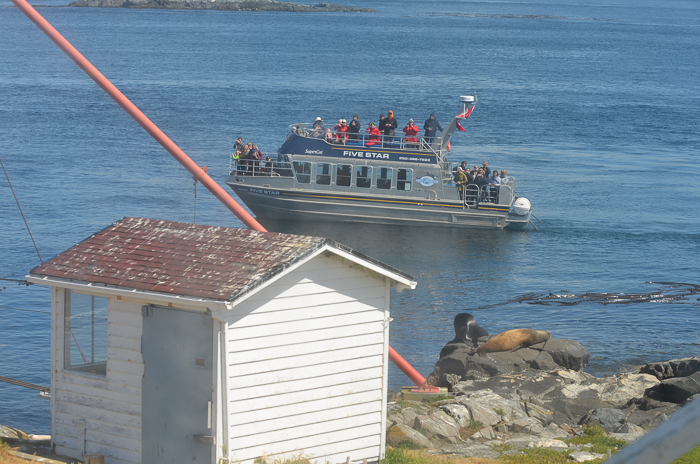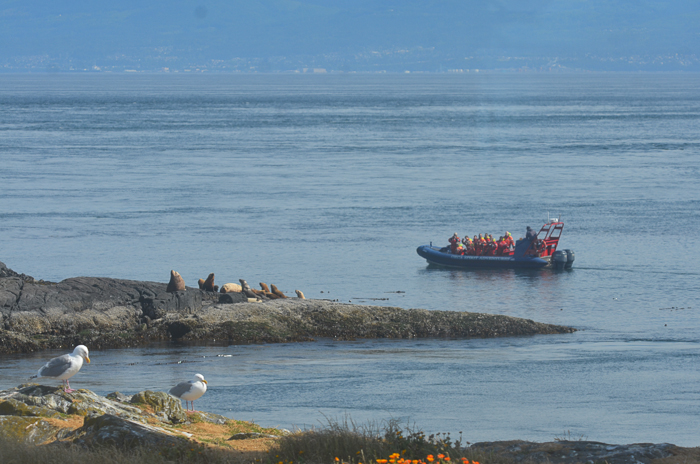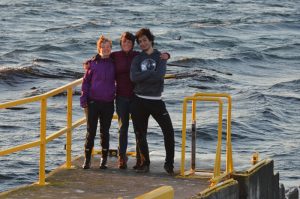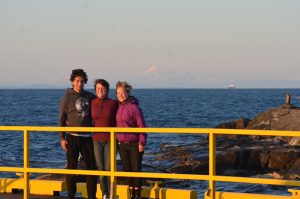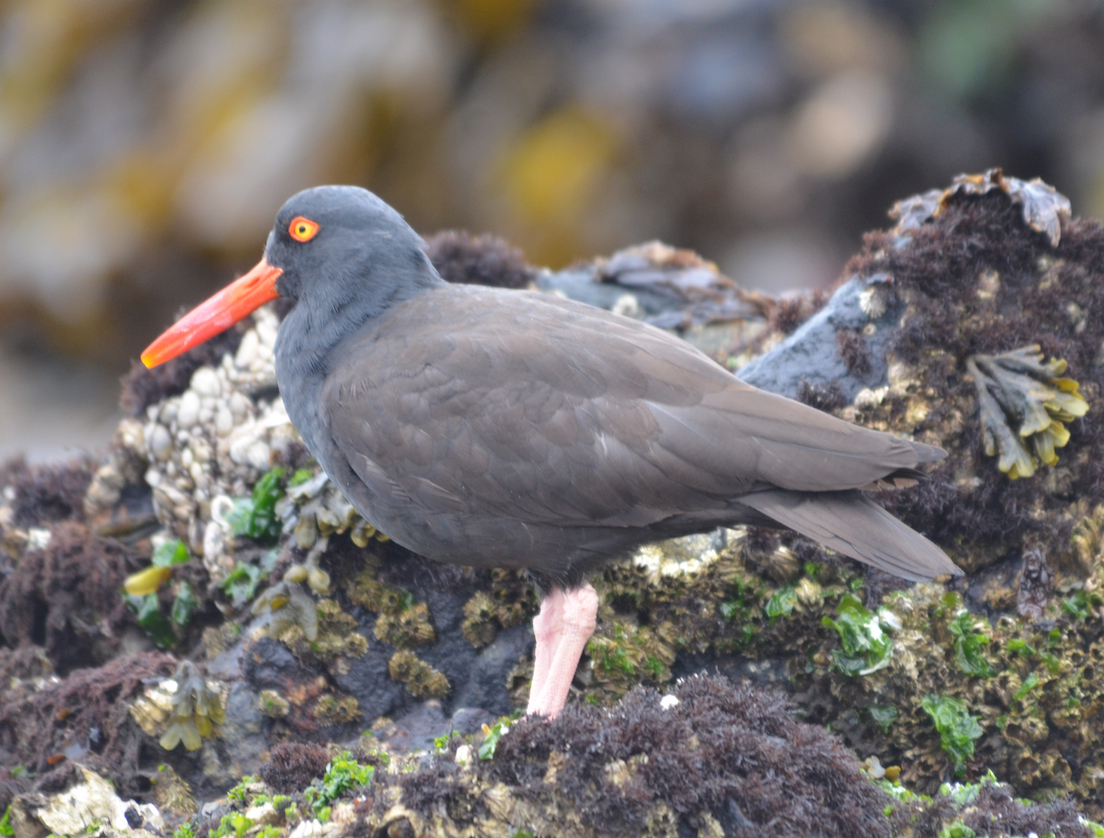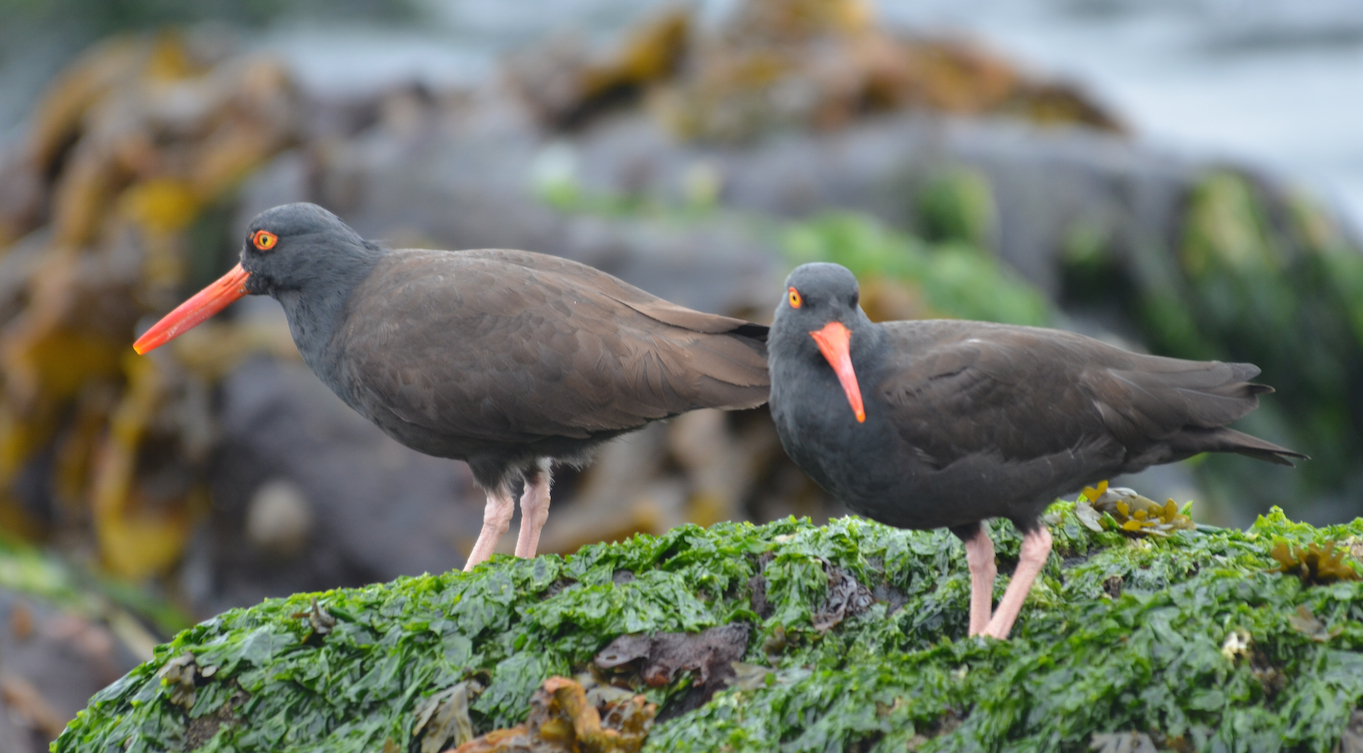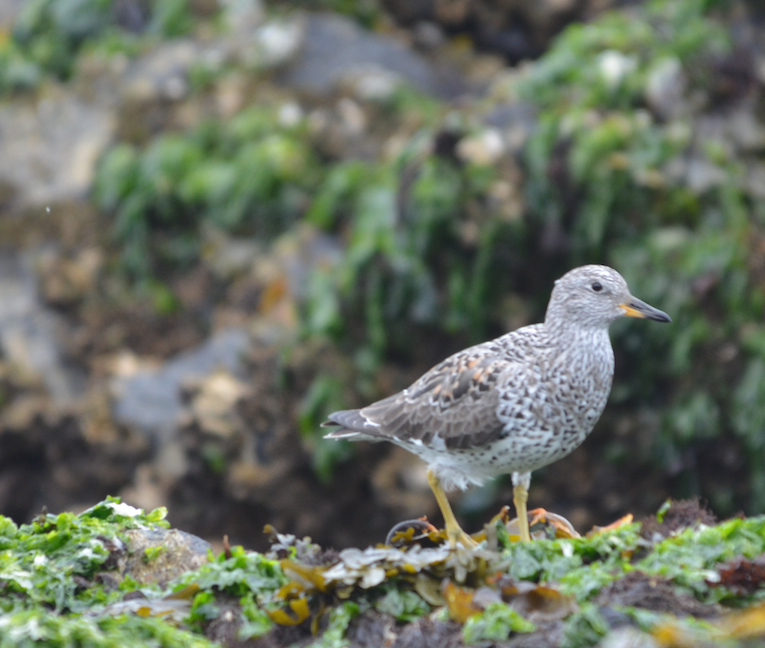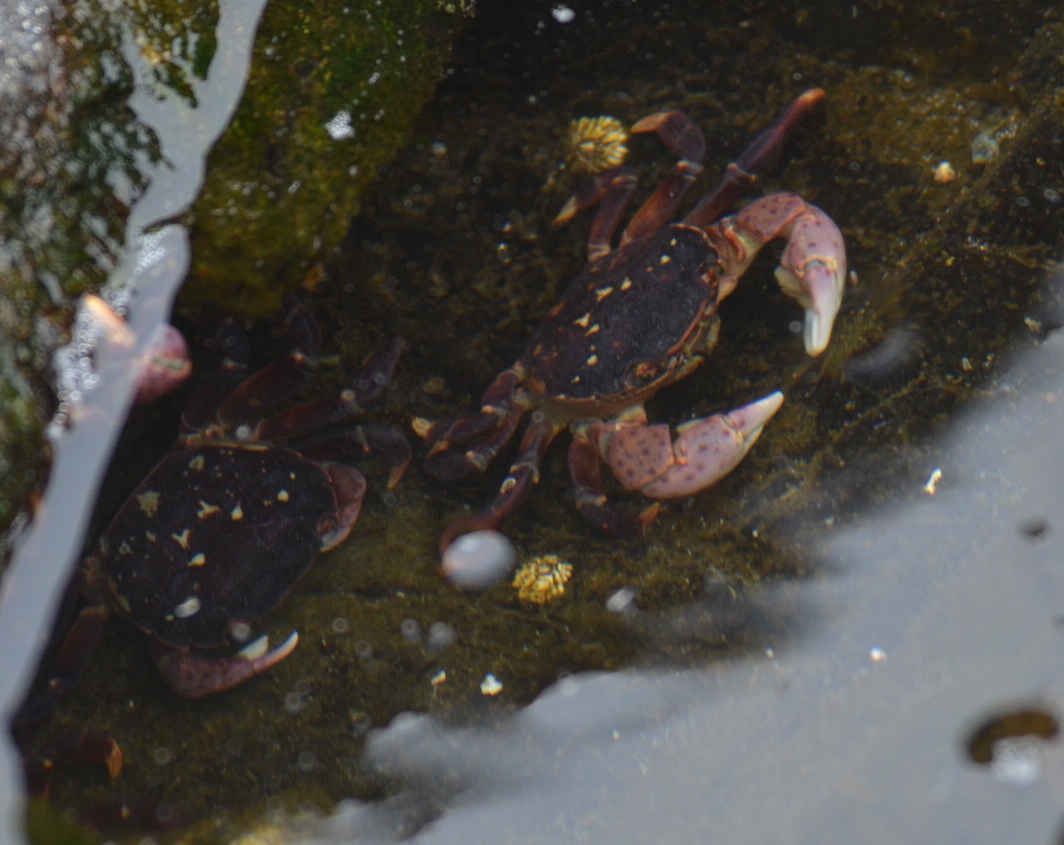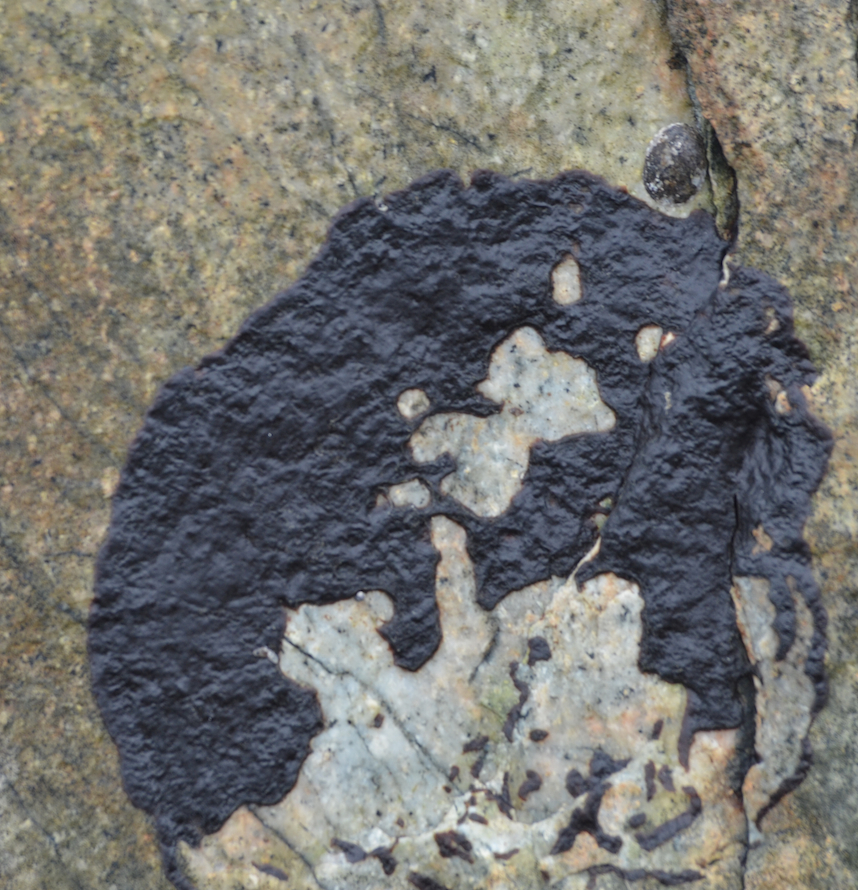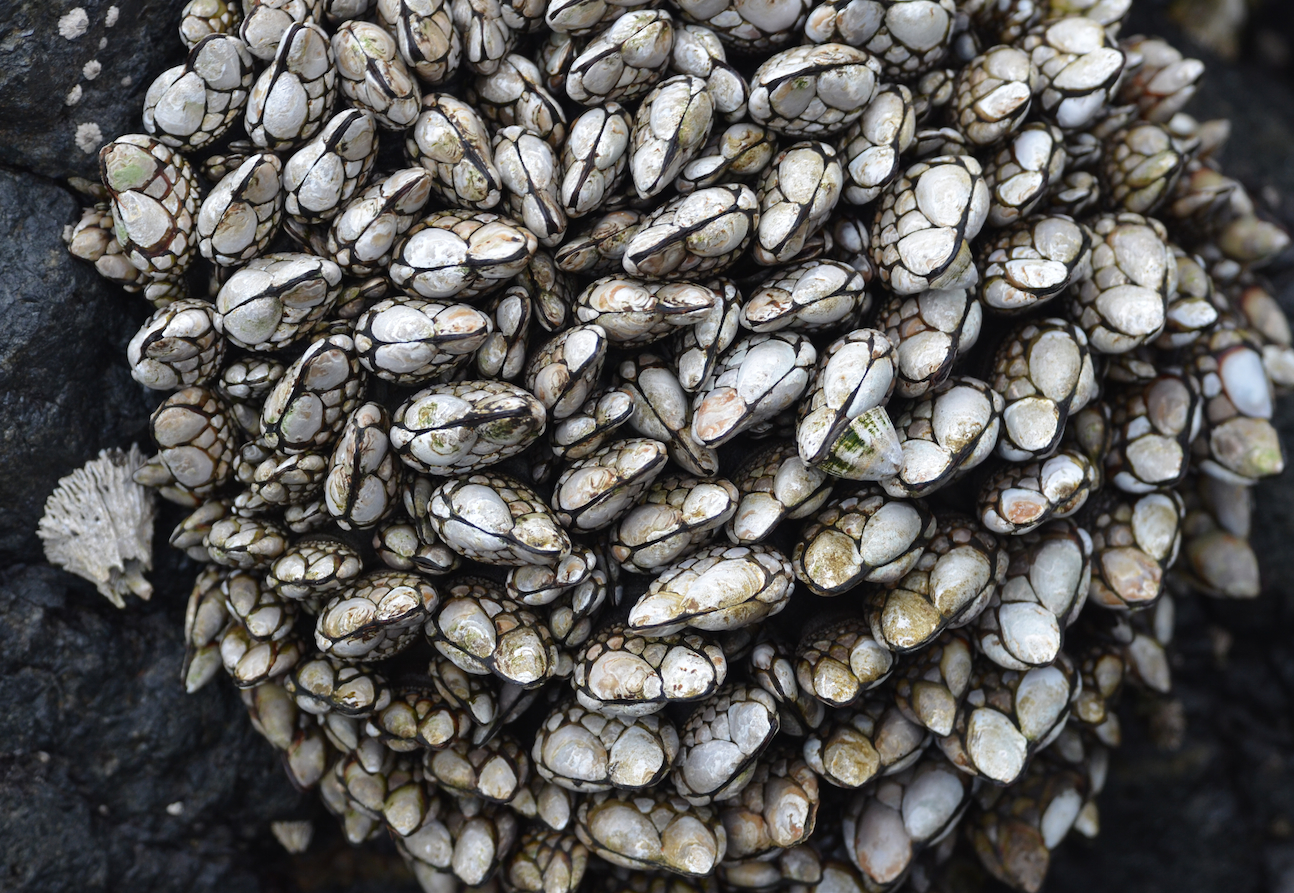Weather and Sea Conditions Winds: Winds were variable swinging all the way around the compass starting with east-southeast at 10 -15 knots in the early morning. It backed through northeast and northwest then to light west southwest by early afternoon. By late afternoon it had passed through southeast again still turning counterclockwise to northeast. Sky: Heavy overcast with showers in the morning then partially clearing. Afternoon sunny. Visibility: Mostly good 15 nm, except in fog. Barometer: 101.4 kPa rising Friday afternoon Forecast: Winds westerly 10 to 20 late this afternoon then diminishing to light after midnight. Periods of rain ending this evening.
Vessels in Ecological Reserve Whale watching vessels: Fourteen were observed working in Ecological Reserve (ER). One of the whale watchers sped into the ER while there were Killer Whales in Middle Channel. Contact was made by VHF radio and they left slowly without responding on the VHF. Later three whale watching vessels were “herding” the killer whales around and inside Rosedale. By rushing ahead of the whales and placing themselves in their path and by “squeezing” the whales in towards the shore of the ER, two of the vessels put themselves into positions where they were observed backing in reverse into the wind and waves and away from the killer whales. After this, we noted that one adult male killer whale was breaching very close to the two zodiacs. Two much larger whale watching vessels were observed using a similar tactic with a Humpback Whale mid afternoon. No other commercial operators, noted in ER today. Sport fishing vessels: Two noted in ER today travelling reasonably slowly through Middle Channel.
Ecology: Six to seven Killer Whales graced Race Rocks Ecological Reserve with their presence today. The group was made up of one large male, one slightly smaller male with a nick on his dorsal fin about a third of the way up, one small and one very small individual and two or three females, one with a nick on her dorsal fin. Photos are out with a query to confirm their identification. These animals swam over directly from Church Point late morning and came in and out of the ER at least three times. They were also observed going into the entrance of Pedder Bay and through Eemdyk Passage behind Bentink Island. Two Humpback Whales, one large and one small were observed feeding about one mile south of the ER and one Humpback was “chased” into the ER by whale watching boats. Five young Northern Elephant Seals came ashore and spent the afternoon sleeping over by the energy building. Two adult Bald Eagles were seen in the ER today, causing the gulls to flock off with every pass. A high abundance of Moon Jellies was observed in the plankton over the last few days and sea surface temperature has dropped to ~10oC with fairly high (for here) salinity of 32.2 ppt.
Sustainability: Sustainability is not just about washing the windows with an eco-friendly product, it also means engaging young people with the natural environment and in particular with the ocean. The ocean has been called the blue elephant in the classroom, as it is a very large presence on our blue planet that is not included well in curriculum. Pearson College is making a difference to ocean literacy with their Marine Science programming and today new marine scientists were inspired to care for the ocean for future generations.
Visitors: Laura Verhegge and two Marine Science classes came on learning field trips to Race Rocks today. Kyle transported everyone aboard Second Nature including distinguished guest, Felix Butschek. Felix is on a yearlong tour around the world as a Rolex Scholar with the Our World – Underwater Scholarship Society in Europe. Felix is a Pearson College alumnus who studied Marine Science with Laura, was active in the Pearson diving program and is now a promising young marine scientist with a serious passion for remote polar seas. It was nice to welcome Felix back to Race Rocks and see him inspiring the first year students during their fun biodiversity explorations and observations. The second class enjoyed observing Killer Whales swim right in front of us as we stood on the rock watching.
Maintenance and Operations: Regular chores. Both fences repaired. Windows washed in Eco-guardian house.
- Kyle and Laura with Marine Science students having fun learning about other life forms and marine ecosystems at Race Rocks. Ichiban priority – fun.
- Both species of sea lions rest and sleep next to and on top of each other.
- Northern Elephant Seals snooze on the lawn.

